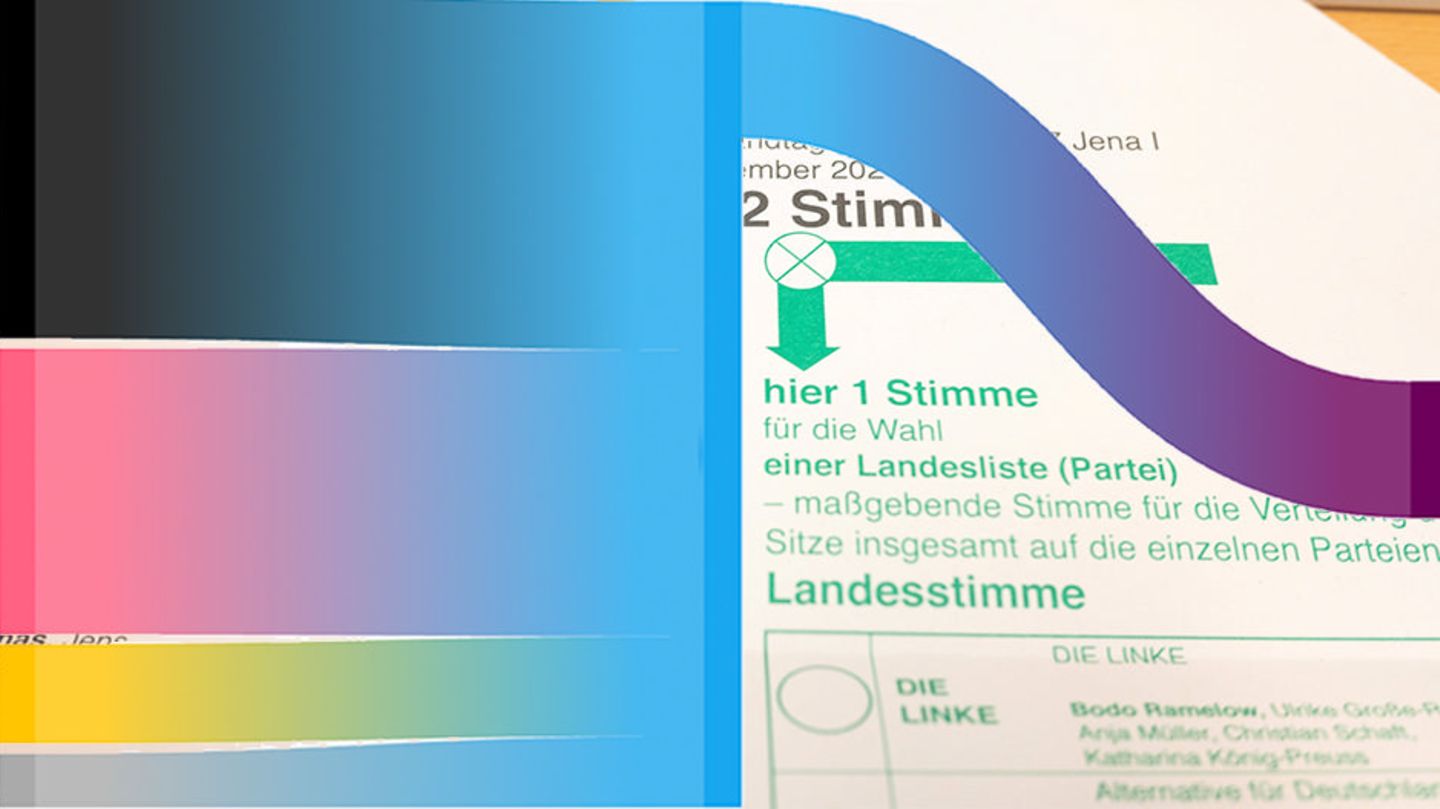Voter migration in the state elections: AfD and BSW were able to win over many voters from the established parties. How the votes have flowed since the last elections.
The Left’s collapse in Thuringia, heavy losses for the traffic light parties, gains for the AfD, a successful start for the BSW – there was a lot of movement in the voter flow in the 2024 state elections in Saxony and Thuringia. You can find quick checks on the individual parties below, and more detailed figures on voter migration in the infographic below.
Voter migration in Saxony: quick checks on the parties
The CDU was able to steal votes from the left wing in particular, with many voters from the previous coalition partners, the Greens and the SPD, switching to the Union. Losses were made to the AfD and the BSW.
The AfD was able to steal votes from virtually all parties, with the CDU taking the biggest chunk. However, a number of former AfD voters also turned to the BSW, which was represented for the first time in this election.
The left had to let many voters go to the BSW of former party colleague Sahra Wagenknecht. She also lost votes to the CDU, AfD and SPD. Many former Left Party voters did not even vote this time and became non-voters.
The previously co-governing Green are also in a pretty ruffled position: They lost votes mainly to the coalition partners CDU and SPD, but also to BSW, AfD, Left and the non-voter camp.
The SPD took votes away from the Greens in particular, but also from the Left Party. In addition, a number of non-voters decided to go to the polls and vote for the Social Democrats. The biggest losses went to the CDU and the BSW, but the AfD also received a number of former SPD votes.
The Sahra Wagenknecht Alliance (BSW) had a successful premiere in Saxony: Voters switched to the BSW, especially from the Left Party. But the newcomer also took votes away from the other established parties and was able to win over many previous non-voters.
For more details Click through the graphics below and see how voter flows changed for each party.
Saxony: Overview of voter trends
Voter migration in Thuringia: quick checks on the parties
The current ruling Leftists had to This time, the party suffered a lot of losses. Losses were caused primarily by the BSW of former Left Party member Sahra Wagenknecht, but also by the CDU and AfD. Some former Left Party voters turned to the coalition partner SPD this time, while some preferred not to vote at all.
The AfD was able to steal votes from virtually all parties and also motivate previous non-voters to go to the polls. But the right-wing populists also had to accept losses and give votes to the BSW.
The CDU was able to steal votes from the previous governing parties, with the largest chunk coming from the Left Party. Many FDP voters also switched to the Christian Democrats. The Union suffered losses to the AfD and BSW.
The SPD lost a number of votes to the CDU and the BSW, as well as to the AfD. The Social Democrats, on the other hand, were able to steal votes from their previous coalition partners.
The Greenspreviously part of the minority government as the third party, lost a number of votes to the CDU, but also to the coalition partner SPD and the BSW. In addition, the AfD stole votes from them.
The FDP had to let many previous voters go to the CDU, and also lost votes to the AfD and BSW. Some of the previous FDP voters did not vote at all this time.
The Sahra Wagenknecht Alliance (BSW) also had a successful start in Thuringia: voters switched to the BSW, especially from the governing Left Party. But the newcomer also took votes away from all other parties and was also able to motivate non-voters to go to the polls.
For more details Click through the graphics below and see how voter flows changed for each party.
Thuringia: Overview of voter trends
About the data used: Voter migration is a rough estimate that compares the migration flows between the last and the current elections. The election research institute Infratest Dimap determines the inflow and outflow of voters between the parties for the ARD. The basis is an estimation model that takes into account, among other things, surveys on election night (so-called exit polls), the result of the preliminary count on election Sunday, as well as changes in the electorate itself (such as new first-time voters).
Sources: ,
Source: Stern
I have been working in the news industry for over 6 years, first as a reporter and now as an editor. I have covered politics extensively, and my work has appeared in major newspapers and online news outlets around the world. In addition to my writing, I also contribute regularly to 24 Hours World.




